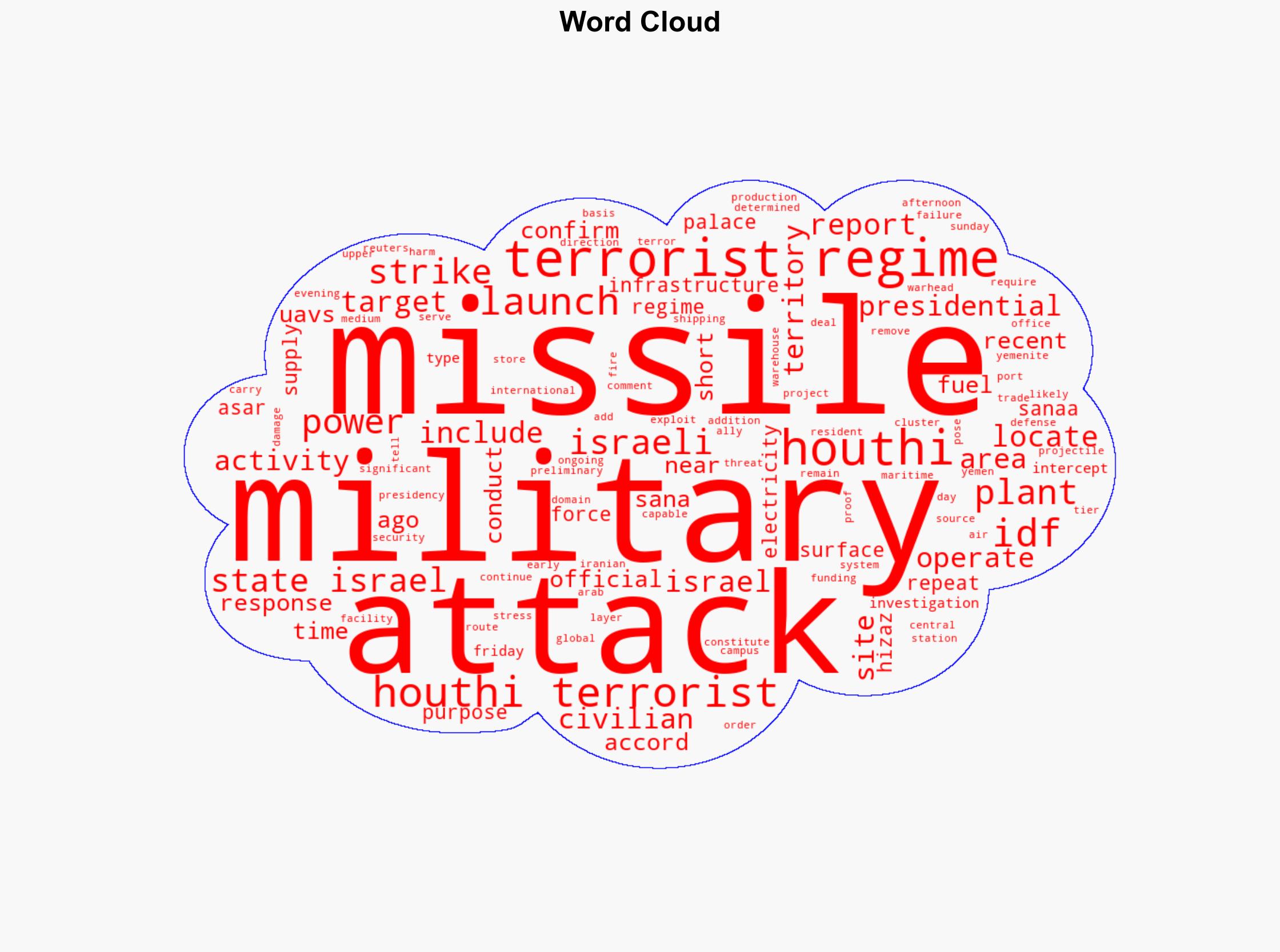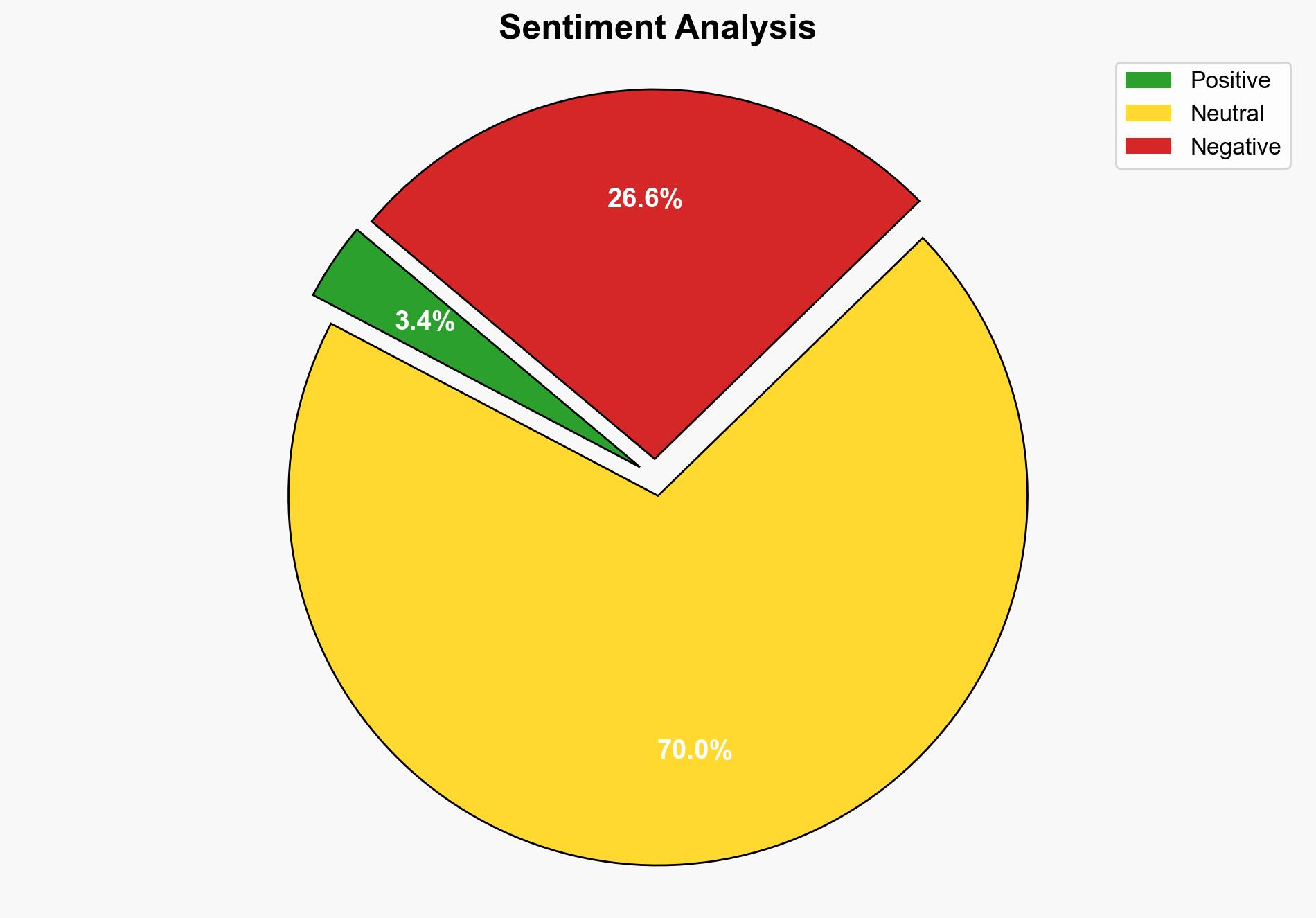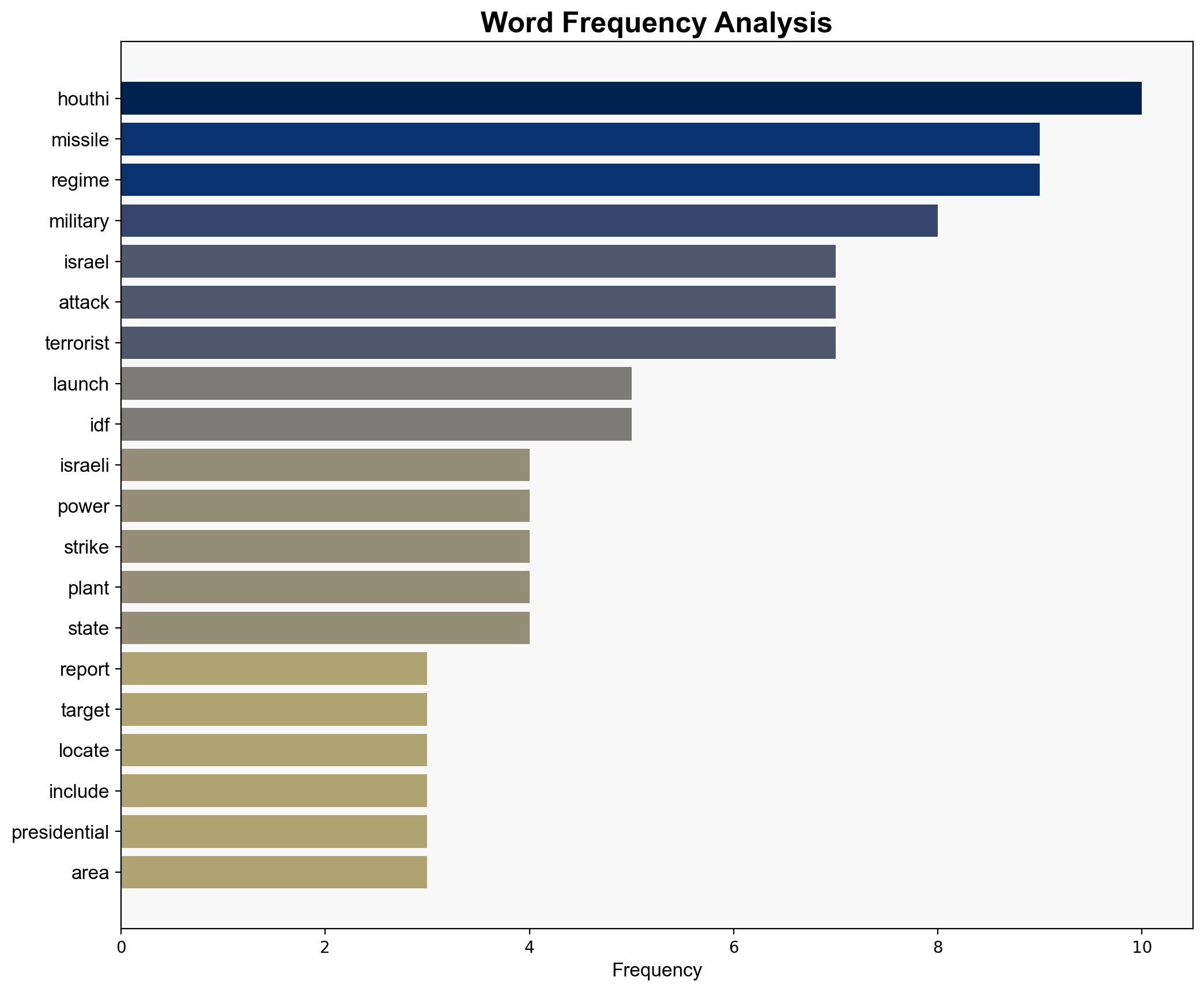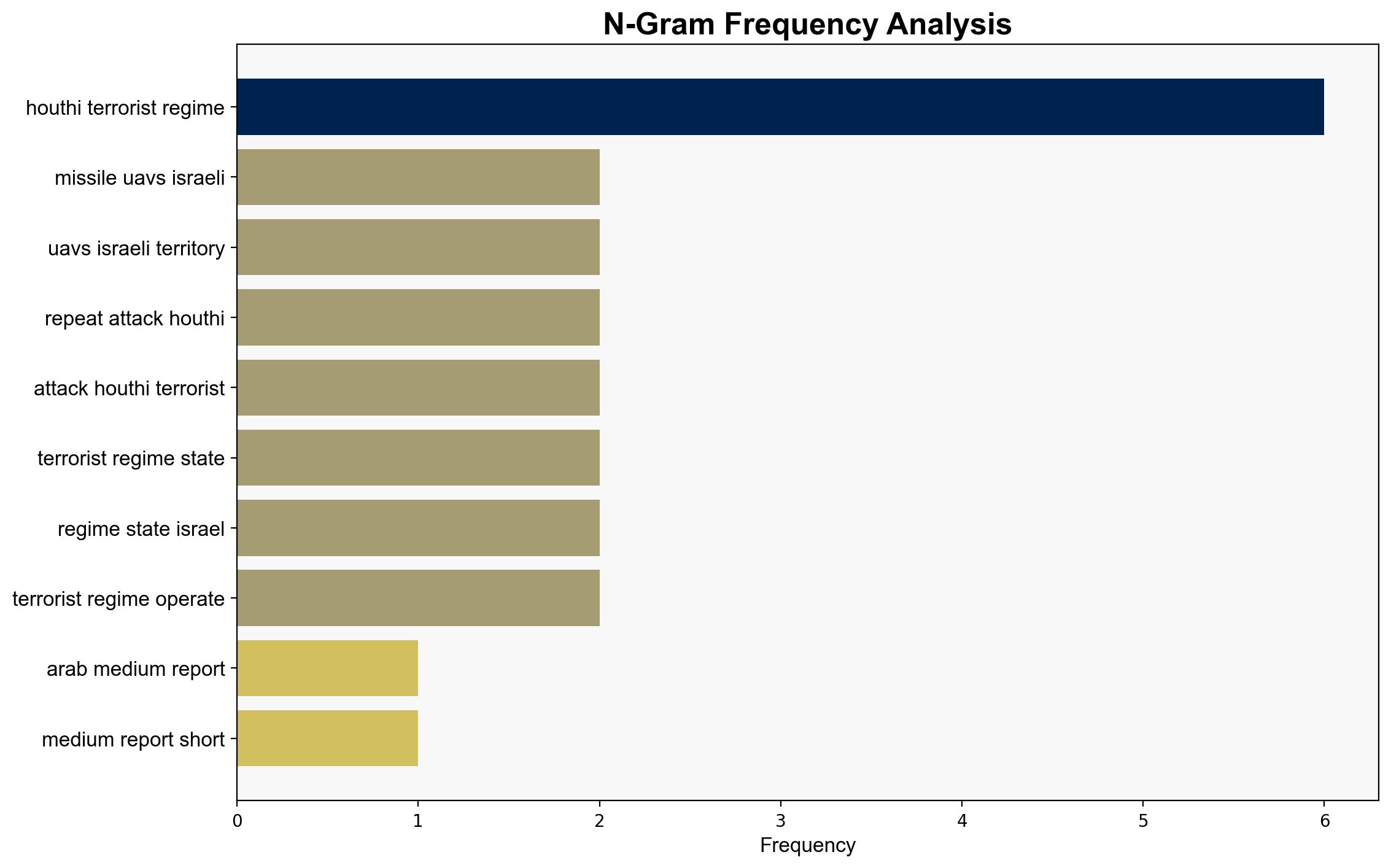Initial reports of attack on Yemen – Israelnationalnews.com
Published on: 2025-08-24
Intelligence Report: Initial reports of attack on Yemen – Israelnationalnews.com
1. BLUF (Bottom Line Up Front)
The most supported hypothesis is that Israel conducted a targeted military strike on Houthi infrastructure in Yemen as a direct response to recent missile and UAV attacks on Israeli territory. Confidence level: Moderate. Recommended action: Increase intelligence monitoring of Houthi and Iranian activities in the region to anticipate further escalations and prepare defensive measures.
2. Competing Hypotheses
1. **Hypothesis 1:** Israel launched a preemptive strike on Houthi targets in Yemen to neutralize imminent threats posed by missile and UAV attacks on its territory. This aligns with the IDF’s statement confirming strikes on military infrastructure linked to the Houthi regime.
2. **Hypothesis 2:** The reported attacks are part of a broader strategic maneuver by Israel to disrupt Iranian influence in the region, using the Houthi missile launches as a pretext for a wider campaign against Iranian proxies.
Structured Analytic Techniques (SATs) such as Analysis of Competing Hypotheses (ACH) indicate that Hypothesis 1 is better supported by the available data, given the direct correlation between recent Houthi attacks and the Israeli response.
3. Key Assumptions and Red Flags
– **Assumptions:** It is assumed that the IDF’s statements accurately reflect the events and motivations behind the strikes. Another assumption is that the Houthis are acting independently rather than as direct proxies of Iran.
– **Red Flags:** The lack of independent verification of the attack details and the potential bias in reporting from both Israeli and Houthi sources. The possibility of misinformation or exaggeration by involved parties.
– **Blind Spots:** Limited insight into the internal decision-making processes of the Houthi leadership and their coordination with Iran.
4. Implications and Strategic Risks
– **Escalation Risks:** Continued military exchanges could lead to broader regional conflict, drawing in Iranian and potentially other international actors.
– **Economic Impact:** Disruption of shipping routes in the Red Sea could affect global trade, particularly if the conflict extends to maritime domains.
– **Geopolitical Tensions:** Increased tensions between Israel and Iran, with potential impacts on U.S. and Gulf state relations.
– **Psychological Impact:** Heightened fear and instability in the region, affecting civilian populations and potentially leading to increased refugee flows.
5. Recommendations and Outlook
- Enhance intelligence sharing with regional allies to improve situational awareness and response capabilities.
- Engage in diplomatic efforts to de-escalate tensions, involving key regional stakeholders and international mediators.
- Scenario Projections:
- Best Case: Successful diplomatic intervention leads to a ceasefire and resumption of peace talks.
- Worst Case: Escalation into a broader regional conflict involving multiple state and non-state actors.
- Most Likely: Continued tit-for-tat exchanges with periodic escalations, requiring ongoing military vigilance.
6. Key Individuals and Entities
– **Houthi Leadership:** Key figures within the Houthi movement who may be directing military operations.
– **Israeli Defense Forces (IDF):** As the executing body of the reported strikes.
– **Iranian Regime:** Potentially influencing Houthi actions and regional strategy.
7. Thematic Tags
national security threats, cybersecurity, counter-terrorism, regional focus





